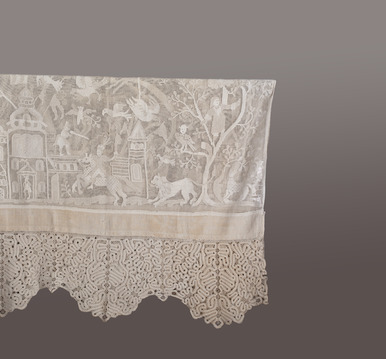Fur clothing was worn by people of all walks of life in Russia. The presence of such clothes in the family was considered a sign of prosperity. Fur coats for peasants were made mostly of sheepskin, and less often of fox, raccoon, polecat, sable, and beaver; as a rule, the fur of these animals was used to trim the coat. In medieval Russia fox and sable fur coats were considered the accessory of the nobility — the boyars and the wealthy urban elite, and were worn on holidays and important dates. According to Russian tradition fur clothing should be worn with fur on the inside, close to the body, the outer “nagolnaya” side was “naked” or “pokryta” — covered with dyed cloth or canvas, or factory silk and woolen fabrics for wealthier owners. The color of the fur coats depended on the color of the wool of the sheep, the tanning method and the dye. In some areas preference was given to white rawhide coats, in others — to yellow or yellow-red, dark brown or black ones; in some villages yellow coats were worn only by girls and young women, in others light-colored coats were festive and were intended exclusively for men. Cloth-covered fur coats were considered beautiful and suggested their owners’ material well-being.
The length of fur coats varied: as a rule, a fur coat covered the legs almost completely, and such a coat was considered a prestigious garment. In the 19th century, shorter fur coats became fashionable — half-length pieces that barely covered the knees and were worn by young men. Coats were decorated with a fur collar and trimmings on the collar, flaps, sleeve cuffs and hem; embroidered leather bands sewn on the upper front part; patches of braid and embossed patterns on sleeve cuffs, neckline and the seam connecting the cut back to the skirt of the coat. The embroidery of the lower corner of the right hem was typical of a woman’s coat.
The value of the fur coat in the perception of Russian people was also in the use of this clothing in rituals associated with important moments in life. Newborn babies were placed on the fur surface of the coat to ensure their happy future; newlyweds sat on it at the wedding table, believing that in this case their life together would be happy and well-fed and there would be many children in the house. Coats with fur turned inside out served as clothing for the mummers on Christmas Eve and Maslenitsa. People dressed up in the same way during wedding festivities.

